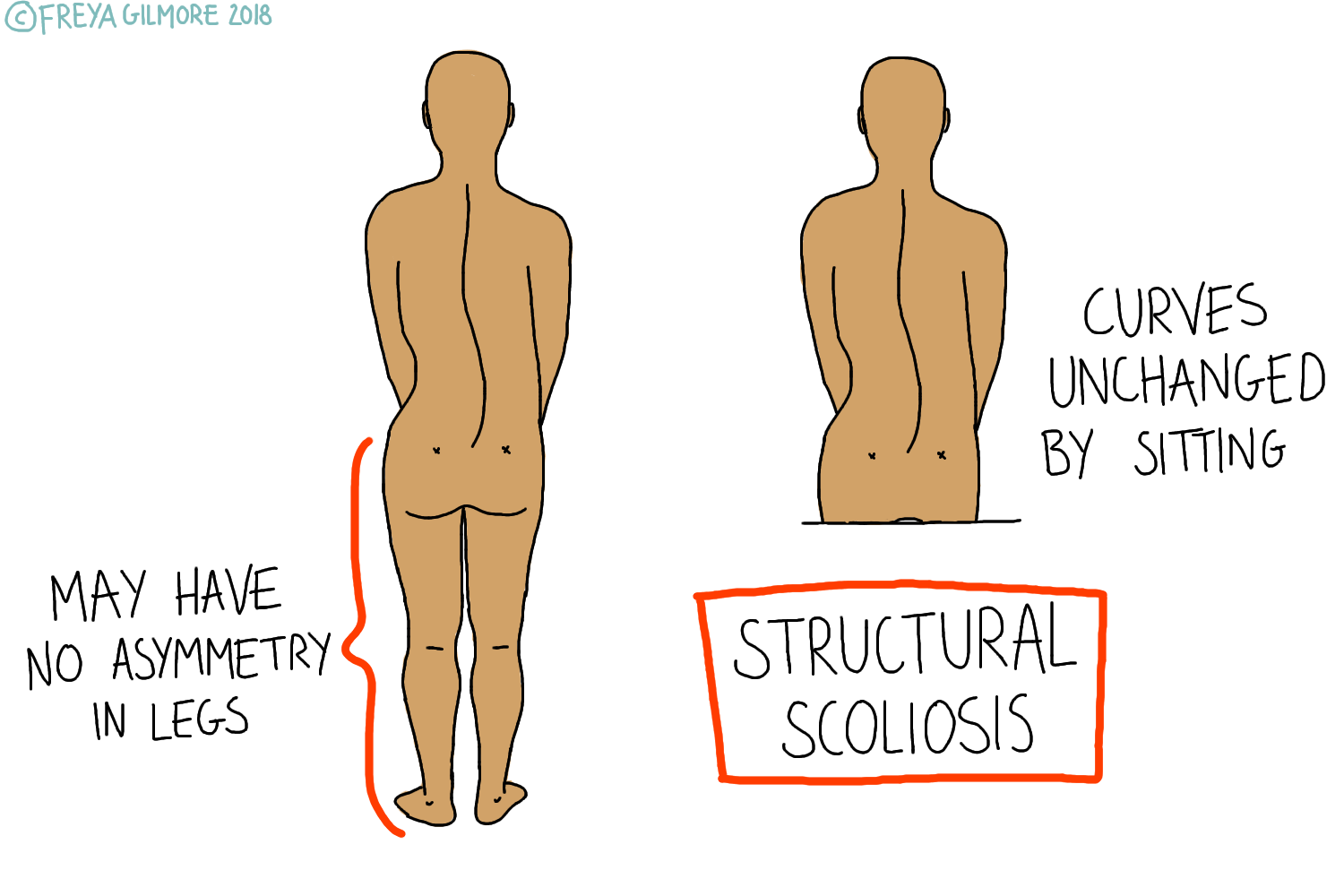Scoliosis
Being told you have a scoliosis is a horrible thought for some, but the truth is most of us have some degree of asymmetry. It’s also possible to have a scoliosis in certain positions only- this is called a “functional scoliosis”.
What is a Scoliosis?
When viewing the back from behind, if there is any kind of sideways curve, this is a scoliosis. Typically a curve further down the back will correct itself before reaching the head. This is an S-shaped curve, and serves the purpose of keeping the head level. Sometimes the curve is just a C-shape, which may be more significant from a clinical perspective.
Along with the sideways curves, there is often a degree of rotation. This is easier to see when the person being examined bends forward. From behind, one side of the shoulder or upper back will be higher. This rotation combined with the sideways bend can limit movement through the back and ribs. Some people will find they struggle to take very deep breaths or develop pain in the diaphragm.
What Causes a Scoliosis?
Annoyingly, a lot of the time there is no obvious cause. There are some conditions where spinal curves are more likely to develop, such as Marfan Syndrome. In the absence of these, there is usually no apparent reason for their development.
However, a functional scoliosis may be easier to explain. Typically, these will disappear on sitting, but be present on standing. This is because the cause is not within the spine, but in the lower body.
Treatment
Depending on the severity of the angles within the curves, treatment could be anywhere from conservative management to a brace or surgery.
Alongside or after this, osteopaths can help with muscular tightness, including that of the diaphragm. Our aim when working with scolioses is to help the body adapt to the position. Usually the curves develop during adolescence, so the body grows around them. However, if there are areas of stiffness within the areas that have adapted, they may become quite symptomatic.
Muscles respond to the demands put on them. Those on the concave side will shorten, and those on the convex side will be held in a stretch. Working to lengthen the shortened muscles using hands on treatment and exercise can help to regain a little movement. The over-stretched side may respond well to strengthening exercises, which your osteopath can provide if appropriate.
By helping the joints and soft tissues to be as adaptable as possible, we can help support you in living with your scoliosis.


